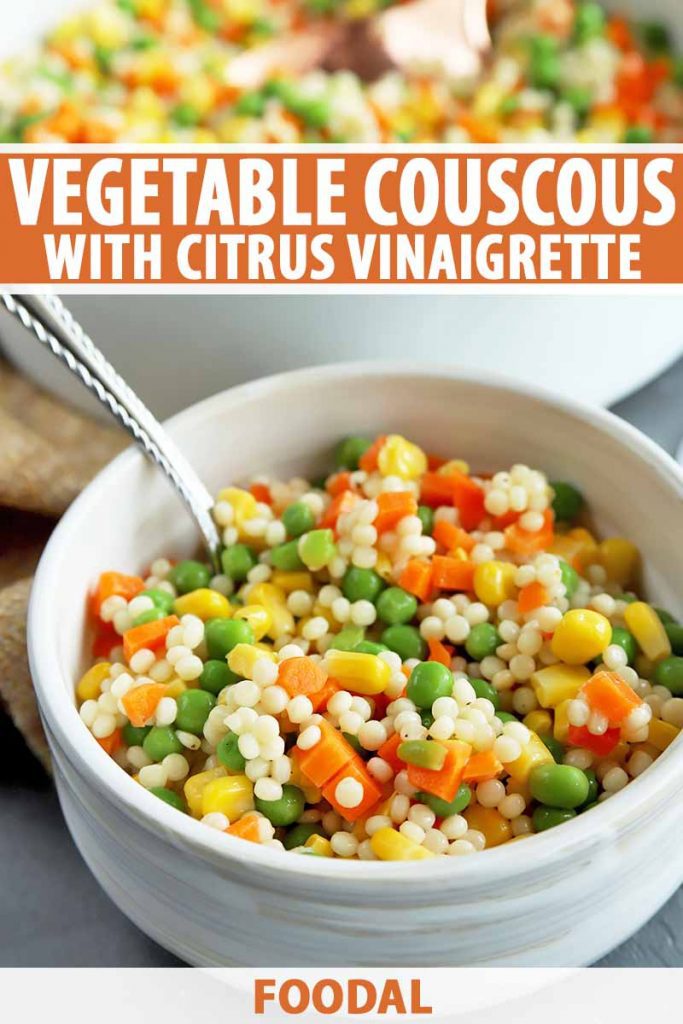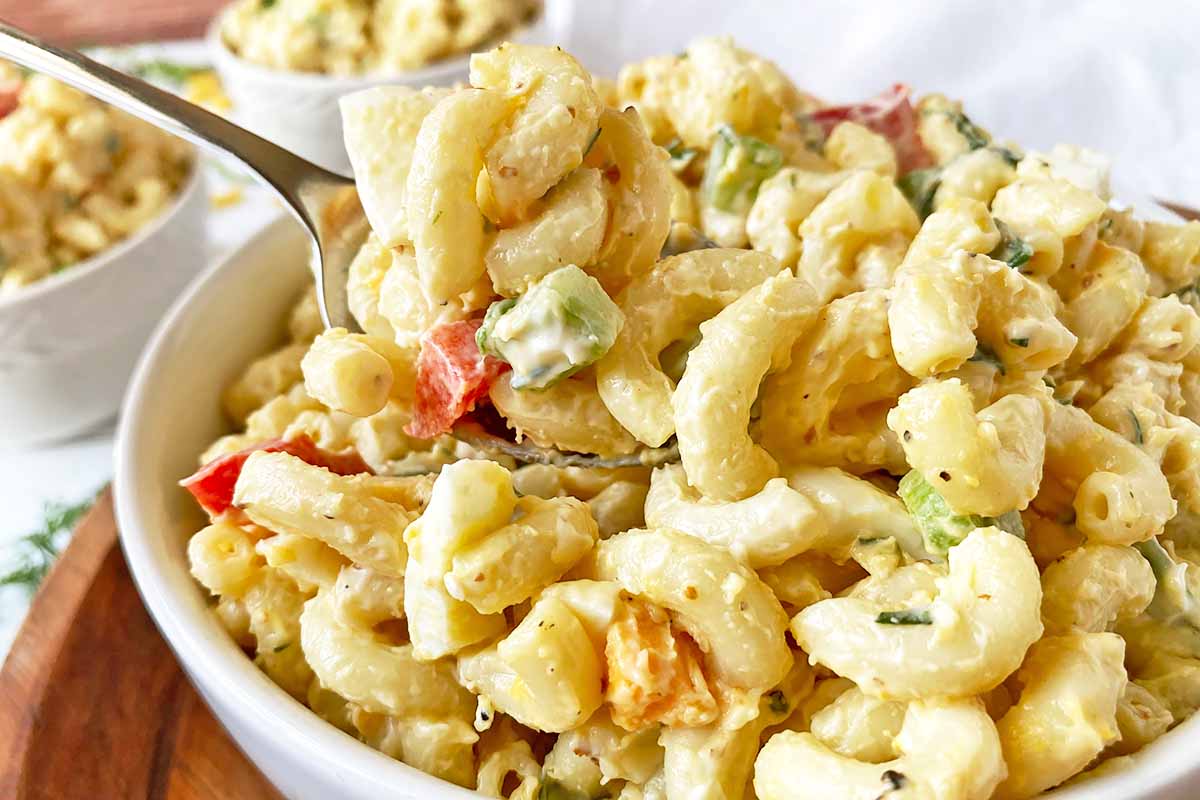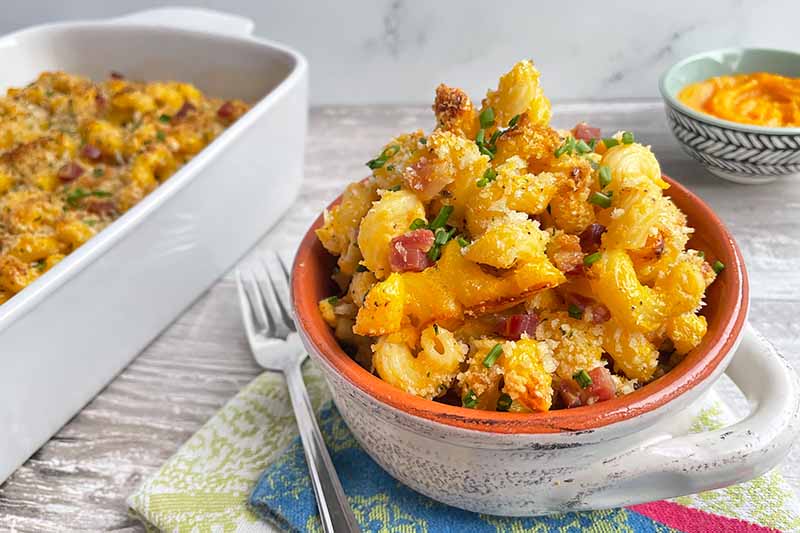When I think about seasonal eating, one word comes to mind: vegetables.
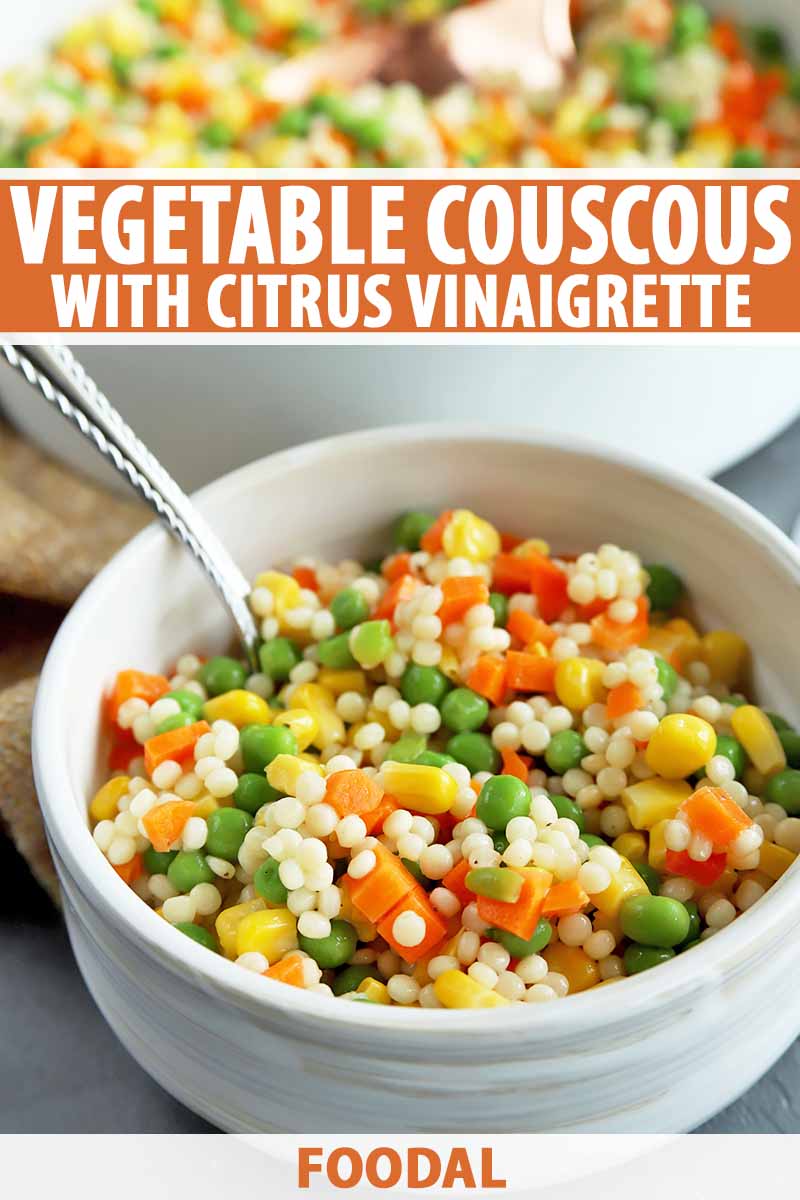
I don’t know if anyone else appreciates the changing of the seasons as much as I do.
To me, it’s not just about the weather getting warmer in the springtime and the green starting to peek through. It’s not only about the birds breaking into song and the days getting longer.
The one thing I truly look forward to with each changing season is the variety of new, fresh, and seasonal ingredients that become available to work with.
(I am such a food nerd, I know…)
After months and months of working with the same fruits and vegetables, it’s invigorating to have all new fresh ingredients come into play. It’s like getting a whole new menu, right in your own supermarket and I am just SO excited for the farmers market to open up with the arrival of warm weather each year.
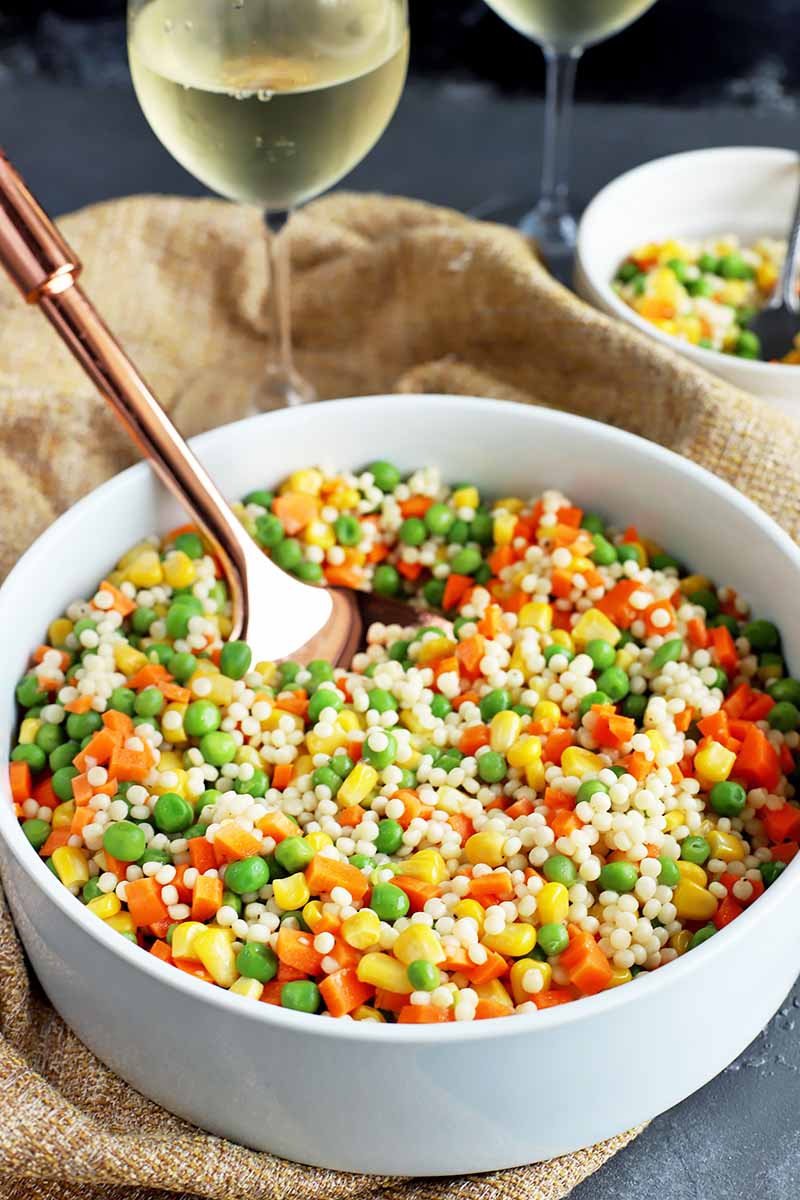
Give me all the fresh fruits and vegetables, please!
But this recipe offers something a little different.
Whereas you could easily make it with fresh and delicious springtime peas when they first become available, or sweet corn from the farm stand in the summer, it also features wintertime citrus, and late season carrots, a root that’s good for storage throughout the winter.
Make it with what’s fresh and available locally, or turn to frozen produce that you bought in bulk, or canned up from your own garden. It’s a recipe that you can make work throughout the year. And you can even change up the combination of veggies if you wish, depending on what you have on hand.
If you want to swap out the peas for snow peas, it’s also easy to adapt to be a low FODMAP dish, made without any garlic, onions, or other high FODMAP foods. You can read more about the Low FODMAP diet here.
Let’s talk about this recipe, shall we?

Just look at all those colors… I mean, it’s been said that we eat with our eyes first, and with this dish, the eyes have a lot to take in.
This vegetable couscous is so light and refreshing. It’s loaded with tons of texture and flavor that makes every single bite special.
Though it’s up for debate as to whether couscous is actually a pasta or a grain, made from crushed durum wheat rather than a more refined flour like what’s typically used to make pasta, this dish is going to be equally delicious whether you present it as a grain bowl or a pasta side.
We love couscous! It’s a versatile base for so many preparations. For a healthier alternative, you can use whole wheat couscous.
The carrots, peas, and corn come together with the couscous grains to create a truly tasty delight. You get the slight crunch from the carrots, followed by a burst of sweetness each time a kernel of corn or a pea pops in your mouth.
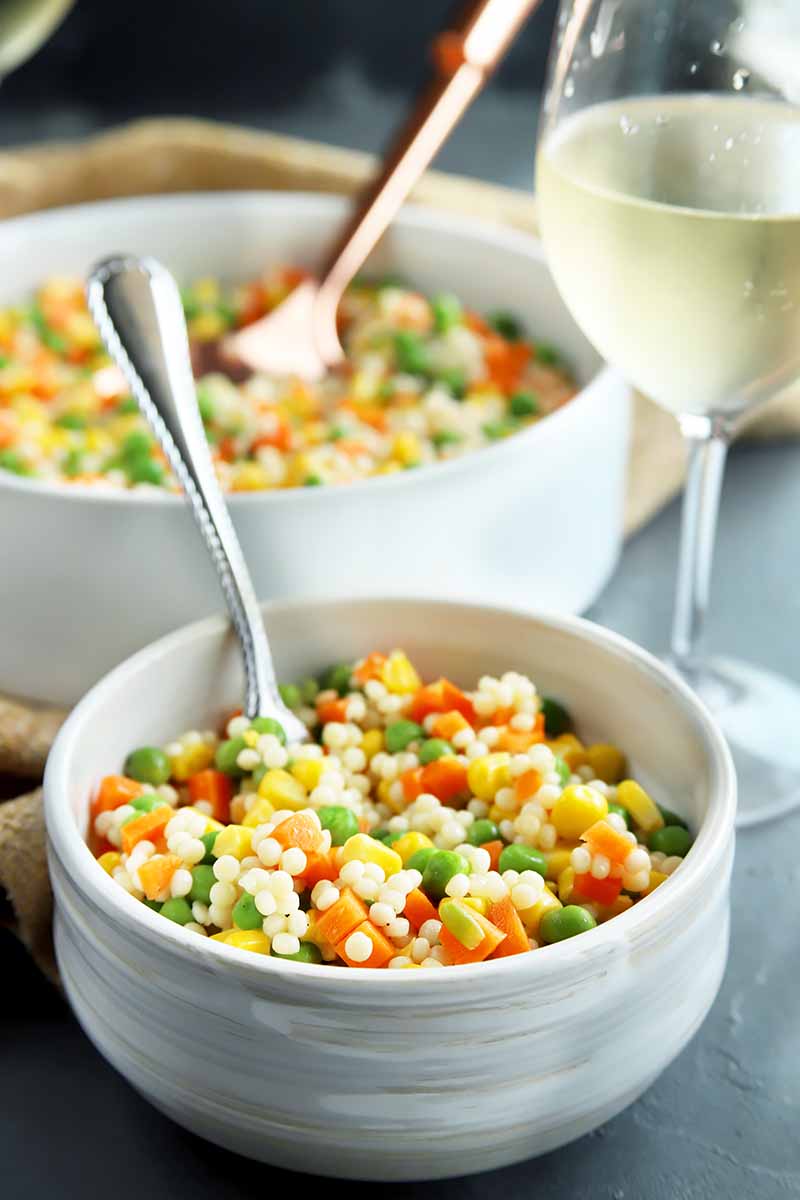
Then the citrus comes in. The citrus vinaigrette that dresses this couscous is so flavorful. Not only does it combine orange, lemon, and lime juices, it also has a touch of vinegar and mustard in the mix.
You can serve this up as a main dish, a salad, or a side. I’ve even eaten it at room temperature and it’s still quite amazing.
The best part of this dish is not only the flavor, but also the fact that it’s super filling and nutritious. Color, texture, fantastic flavor – it might sound like a tall order but this recipe has it all.
The flavor comes through in every single forkful, and it goes really well with a ton of different entree options. I personally like to pair it with anything that comes fresh off the grill. The charcoal flavor is a wonderful smoky pairing for the bright and light couscous.
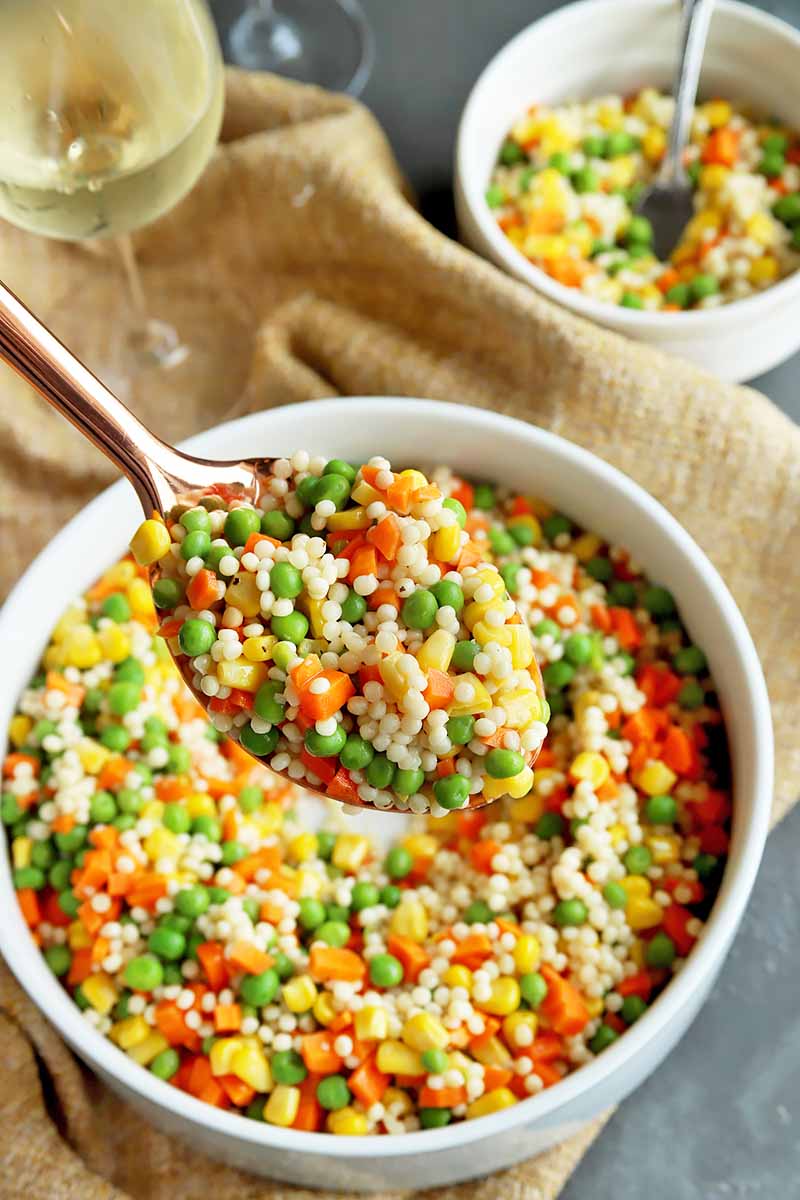
Whether you choose to make it with fresh veggies from the garden or market, or canned items that you put up earlier in the year, pairing it with fish or chicken, or enjoying it as the main dish, this is a stellar option that’s simple to pour together. Pour yourself a tall glass of chilled white wine, kick back, and enjoy whatever season is unfolding.
Print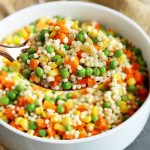
Vegetable Couscous with Citrus Vinaigrette
- Total Time: 30 minutes
- Yield: 4 servings as a main dish; 8 servings as a side dish 1x
Description
Vegetable couscous with citrus vinaigrette is a burst of fresh flavor in a bowl. Colorful veggies, orange, lemon, and lime make this simple grain even more phenomenal.
Ingredients
- 2 cups vegetable broth
- 10 oz plain couscous
- 1 tsp salt, divided
- 1 1/2 cups finely diced peeled carrots (about 5 medium)
- 1 1/2 cups sweet peas
- 1 1/2 cups corn kernels
- 1/2 cup fresh orange juice (about 1 large)
- Juice of 1 lemon (about 2 Tbsp)
- Juice of 1 lime (about 2 Tbsp)
- 1 Tbsp white wine vinegar
- 1/2 cup olive oil
- 1 tsp Dijon mustard
- 1/2 tsp freshly ground black pepper
Instructions
- Bring vegetable broth to a boil over high heat in a large saucepan with a tightly fitting lid. Stir in couscous and 1/2 tsp salt. Cover. Remove from heat and let stand 10 minutes.
- Stir in vegetables. Cover and return to medium heat for 3-5 minutes, or until vegetables are cooked through, but not mushy.
- Add orange, lemon, and lime juice, vinegar, Dijon mustard, salt, and pepper to a small bowl. Whisk together to combine. Continue to whisk constantly and pour olive oil in a steady stream to create and emulsion.
- Pour vinaigrette over couscous mixture and stir to combine.
- Serve warm.
- Prep Time: 10 minutes
- Cook Time: 10 minutes
- Category: Pasta
- Method: Stovetop
- Cuisine: Vegetarian
Keywords: couscous, pasta, vegetables, vegetarian, side dish, main dish
Cooking By the Numbers…
Step 1 – Dice Carrots, Juice Citrus, And Measure Remaining Ingredients
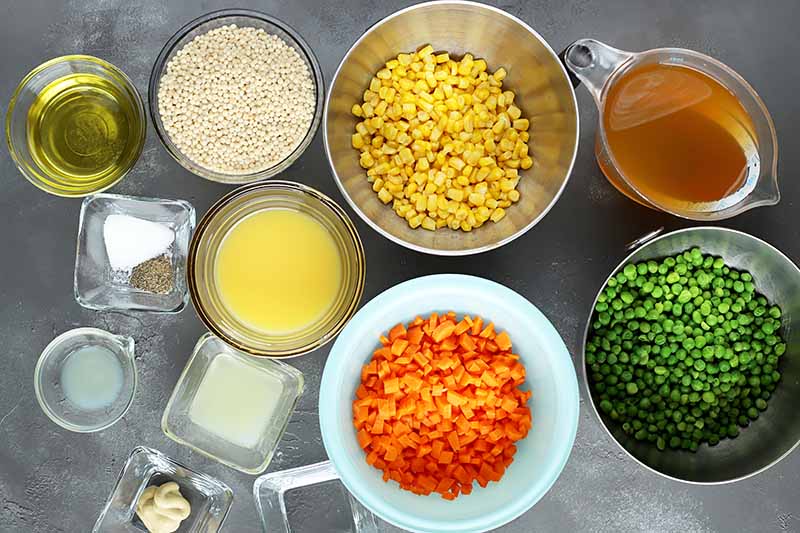
Peel and dice enough carrots until you have 1 1/2 cups. You want to make sure the pieces are small enough so they cook evenly with the peas and corn. I used about 5 medium-large carrots.
Juice one large orange so you have a 1/2 cup fresh orange juice.
Juice one lemon so you have about 2 Tbsp fresh lemon juice.
Juice one lime so you have about 2 Tbsp fresh lime juice.
Measure out all remaining ingredients as listed on the ingredients list.
Step 2 – Cook Ingredients
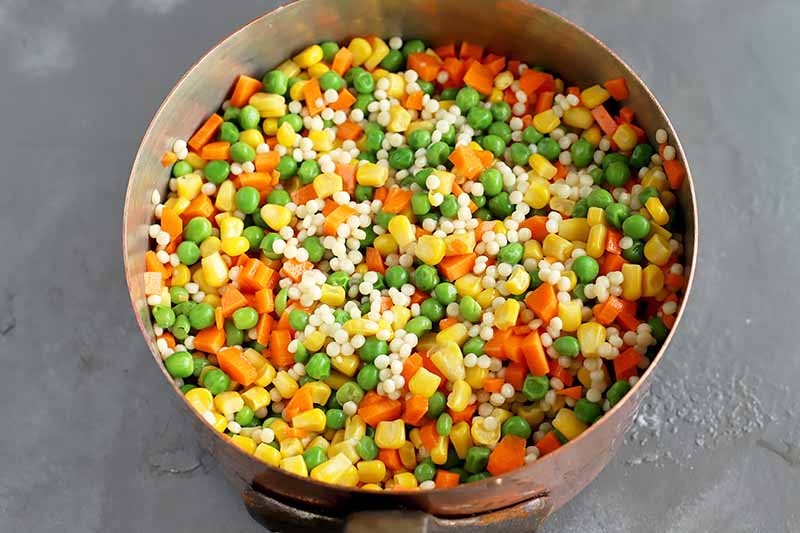
Add vegetable broth to a large saucepan over high heat. Bring to a boil and stir in couscous and 1/2 teaspoon of salt. Cover.
Remove from heat and let stand for 10 minutes without removing the lid.
Stir the vegetables into the couscous. Cover the pan again and return to medium heat for about 3-5 minutes. The vegetables should be cooked through and fork tender, but not mushy.
Remove from heat and set aside.
Step 3 – Make Dressing

In a small bowl, whisk together the orange juice, lemon juice, lime juice, vinegar, mustard, remaining salt, and pepper (freshly cracked is best!). Whisk together to combine.
Add the olive oil in a steady, slow stream, whisking constantly until well-combined.
Step 4 – Finish and Serve
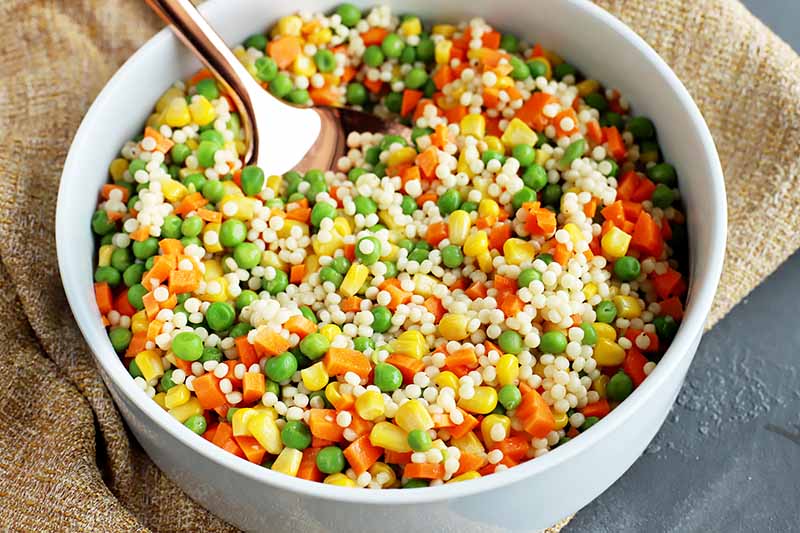
Add the couscous to a large serving bowl. Pour vinaigrette over the mixture, and stir to combine.
Serve warm.
Can I Serve This Salad Cold?
As I mentioned before, I’ve served this salad at room temperature and it retains all the flavor and texture. You can totally serve this dish chilled as well, but I would recommend letting it sit out for at least 30 minutes at room temperature before serving.
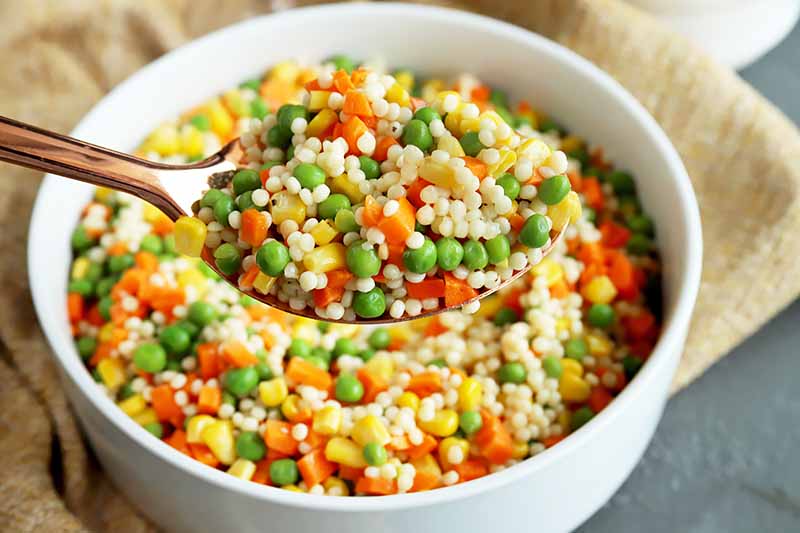
The citrus notes can get a little lost if this dish is too cold, so I like to bring it closer to room temperature for serving.
For more hearty grain-based dishes like this one (or pasta bowls? Or pseudograins?), check out some of our favorite recipes:
- Roasted Butternut Squash and Beet Couscous Salad
- Lemony Quinoa Bowls with Roasted Zucchini and Tomatoes
- Couscous with Eggplant, Zucchini, and Shrimp
- Gluten-Free Lemon and Herb Quinoa Tabbouleh
- Sweet and Tangy Summer Squash Quinoa
Will you serve this as a main dish or a side? Tell us in the comments below, and be sure to come back to rate the recipe!
Photos by Meghan Yager, © Ask the Experts, LLC. ALL RIGHTS RESERVED. See our TOS for more details. Originally published on July 14, 2013. Last updated: December 14, 2021 at 4:51 am. With additional writing and editing by Allison Sidhu.
Nutritional information derived from a database of known generic and branded foods and ingredients and was not compiled by a registered dietitian or submitted for lab testing. It should be viewed as an approximation.
About Meghan Yager
Meghan Yager is a food addict turned food and travel writer with a love for creating uncomplicated, gourmet recipes and devouring anything the world serves up. As the author of the food and travel blog Cake 'n Knife, Meghan focuses on unique foodie experiences from around the world to right at home in your own kitchen.

